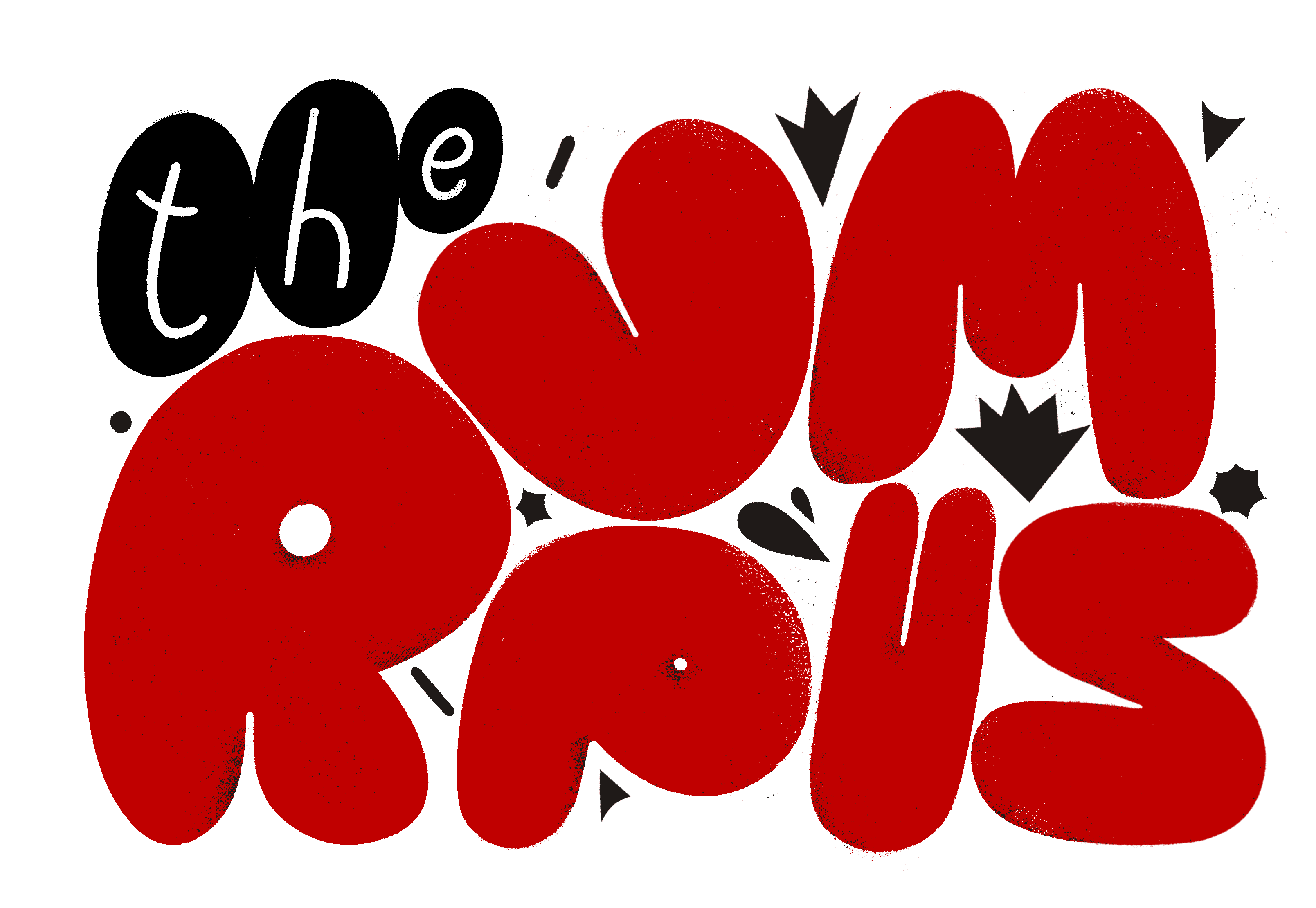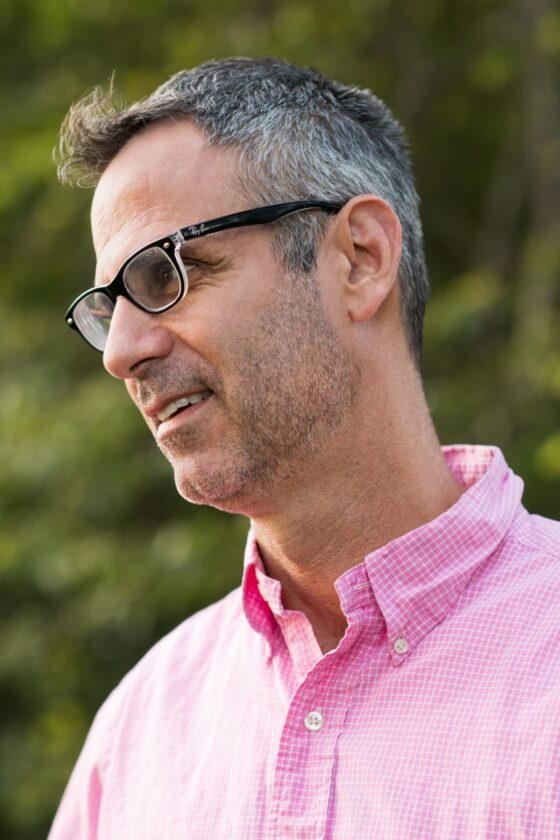
When my daughter started kindergarten last year, I thought my life would change. Five days a week, six hours a day, she was going to be out of the apartment and out of my care. I thought: Finally, this is my time. This is my chance to get my life back on track, to move forward with my career, to let this motherhood thing take a backseat.
Nowadays I am amazed by my former self’s blend of optimism and delusion. I wonder how I got the idea that kindergarten was some magical threshold where children and parents smoothly separate. Or how I had tricked myself into believing that all the challenges of my daughter’s early years were over, and I was now just a regular parent undergoing a familiar rite of passage.
*
You can’t tell by looking at her, but my daughter, whom I’ll call Jess, has a long medical history. She was born with severe hydronephrosis, a congenital defect that means her urine was not leaving her body the way it should, and all the backed-up fluid was damaging both of her kidneys. When she was four months old, she had a bilateral utereostomy, a procedure that surgically disconnected both of her ureters from her bladder and brought them out through her abdominal wall. From then on, instead of peeing into a diaper, she peed out of the two new holes in her stomach.
The surgery was not successful and her health declined rapidly. Her situation improved when her ureters were reattached to her bladder just before her first birthday, but even that operation had to be followed by a series of outpatient procedures involving tubes and urine bags and then stents. Other issues crept up as well: low muscle tone, chronic asthma, and food allergies so serious that an EpiPen accompanied us wherever we went.
These days, my daughter is a strong, capable and healthy child. Her kidneys are in great shape and her asthma is under control. If she has a distinguishing trait, it is her incredibly happy demeanor. She finds joy in nearly every thing—a bead she found on the sidewalk, a play date with a neighbor, sprinkles on her ice cream. She did not seem nervous about going to kindergarten, even though it was a new school that none of her preschool pals were attending.
She did not seem nervous about going to kindergarten, even though it was a new school that none of her preschool pals were attending.
I was excited for her (and, let’s be honest, for the hours of free childcare), but I also had two specific fears. One was lunch. As any parent of a kid with food allergies knows, a fair amount of education and effort is required to make sure your child will be safe when she’s not with you. Her school had contracted a nut-free and seed-free company to handle all of the students’ meals, and the teachers would be with the children during lunch. In many ways this was an ideal environment for Jess, who is at risk for anaphylaxis if she ingests any type of nut. My other main concern was her stamina. She had always tired more quickly than her peers, and without a scheduled naptime, I wondered how she would make it to the end of the school day. (I still don’t know of any public schools in our area of Brooklyn that have a daily rest period for kindergarteners.) But I also knew that over time, she would adjust. She loved books and made friends easily, and she would be okay.
The first couple of weeks were okay. I polished up my résumé and got a job interview. I was able to stop constantly checking my phone to see if the school had called. I enjoyed exercising and going to the grocery store at a leisurely pace. Jess reported that the best part of school was playing with a classmate named Jonny, her “best, best, best friend.” But the hours between the end of school and bedtime were stressful. If we rode the subway home with other families she acted silly and playful, but as soon as we peeled off to head to our block she would collapse on the sidewalk and beg to be carried the rest of the way. If she didn’t get thirty or forty-five minutes of sleep once we made it to our apartment, then most nights dinner consisted of me bribing her to stay awake with cartoons while I fed her, one forkful at a time. I became accustomed to enduring her, not enjoying her. The upshot: she was often fast asleep by 7 p.m.
*
I thought I knew everything there was to know about my daughter. Since she was born, I had been the one at home with her while my husband, Ben, worked long hours at jobs he didn’t particularly like to provide our family with a steady income and—equally crucial—health insurance. I had been the one to fix all the meals, fold all the clothes and trek to doctors’ appointments all over the city. I knew which vein in which arm was the best for her blood draws; I could tell by the smell of her urine if she had an urinary tract infection. By the time she was three, Jess was healthy enough to stop the daily antibiotic she had been taking since birth. She could run, she could speak, she could hop, kick, jump, climb. I was even a little proud the first time I saw her and another kid duking it out at the playground. She had always been tough, but now she was getting strong. She had made so much progress that we ended her twice-a-week physical therapy sessions and took her to dance and swim classes instead. It felt so good to just let her be a kid.
For five years, I had been her caregiver, her historian, her primary companion. She had gone to a tiny preschool a few mornings a week and seemed fine there. It was startling then, a month into kindergarten, to witness Jess in a large classroom environment, among twenty-four of her peers, and feel that something about her was off.
At first it seemed like little things: she struggled to hold a pencil correctly and she was easily distracted. She had a tendency to space out. It’s a big adjustment for her, I told myself. Just relax. Then at drop-off one morning, there was a worksheet for the children to do, and I watched with wide eyes as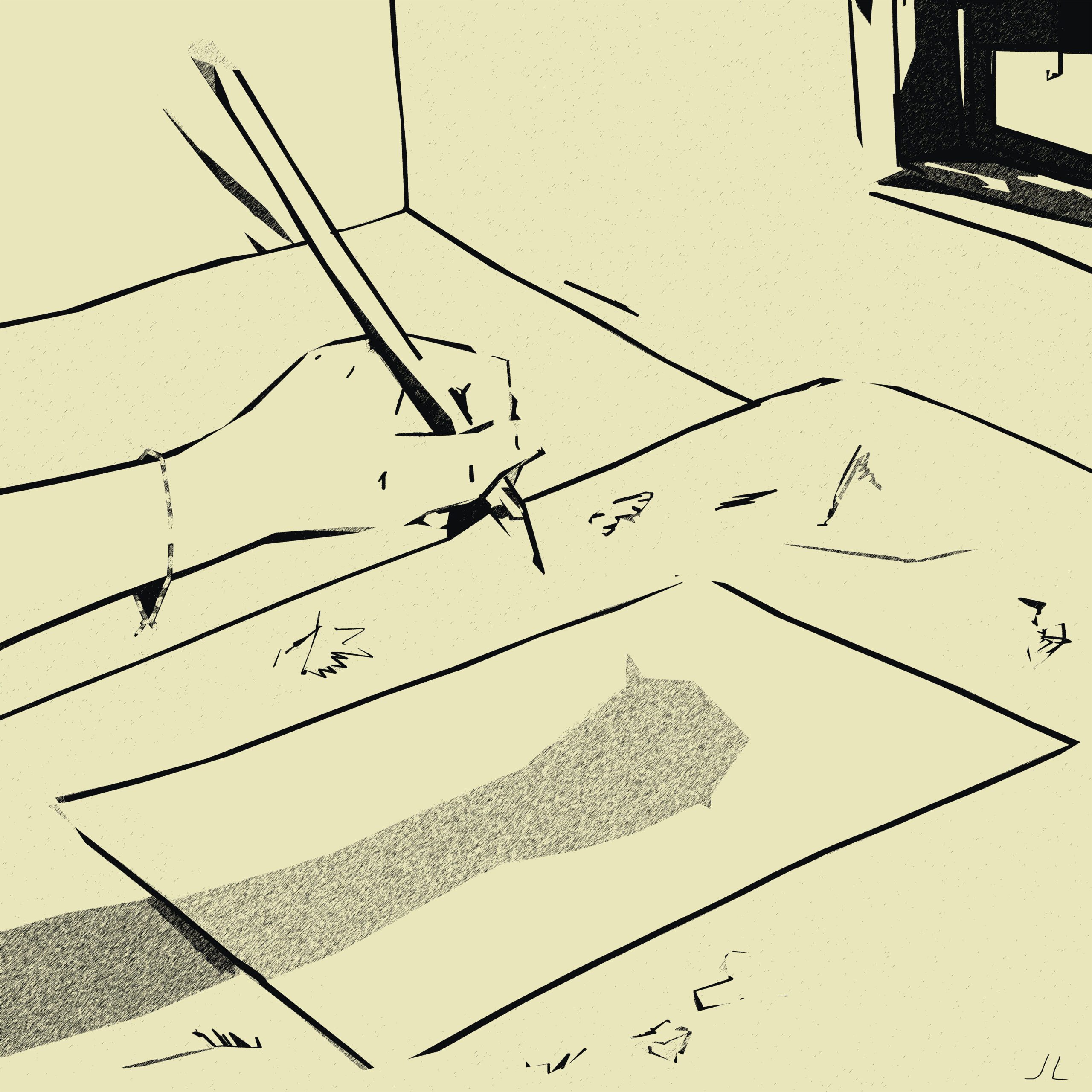 the child sitting next to mine completed the entire thing before my daughter had finished forming the letters of her name at the top of the page.
the child sitting next to mine completed the entire thing before my daughter had finished forming the letters of her name at the top of the page.
As a graduate from not one but two progressive liberal arts colleges, I am perfectly aware that children have different ways of learning and not every peg fits the same round hole. I’ve read about Waldorf schools and Howard Gardner’s multiple theories of intelligence and the importance of grit and the challenges of implementing the Common Core standards. Despite my knowledge and my repeated efforts to silently mantra she is on her own journey, she is on her own journey, I could still feel the familiar pinprick of anxiety spreading like a rash over my body. On top of everything else, is my daughter not smart?
The fall marched on. I did not get the job for which I had interviewed. Jess caught a series of colds, which triggered her asthma as it always does, and missed several days of school. At the end of each week, her backpack rarely contained a completed assignment. And yet it was clear to me that she was learning as I listened to her sound out the words of Hop on Pop or sing a new song about five little pumpkins.
One Friday morning in November, Ben and I went to our first parent-teacher conference. I’m sure some of our daughter’s positive attributes were touched on, but all I can remember with certainty is hearing that she was behind her classmates in almost every area. Her teachers thought she should be evaluated by the Department of Education to see if she qualified for special education services. They also asked if she had ever seen a neurologist. She had—but not recently.
After the meeting, Ben, as is his pattern, took the new information in stride. “We’ll see what the evaluations find, and we’ll go from there. It’s too soon to know what she really needs.” The conference was over, and we were sitting on the second floor of a café near the school, drinking coffee out of paper cups and staring out the window. I, as is my pattern, was despondent. “What if she’s always behind? What if this school is just too hard and we have to find her a special school?” On the sidewalk below us, parents unloaded their children at the entrance of a private elementary school that costs more than $30,000 a year to attend. A school for children with learning difficulties surely would cost even more. I felt sick. I thought the hard part of her childhood had passed; I needed the hard part of her childhood to have passed. I was not up for new problems.
*
A few hours later I was on a bus, halfway to Washington, DC, to spend a weekend with old friends, all women. We were all extricating ourselves from our families for two days of drinking, listening to live music, and sitting around laughing and talking in sweatpants. Jess had been sick earlier that week with a bad asthma flare-up, so a mini-vacation was just what I needed. Though the parent-teacher conference lingered in my mind, whatever needed to happen next could definitely wait until the weekend was over. “Have fun,” Ben had said as we kissed good-bye. “Don’t worry.” I opened my laptop to work on a job application, but mostly I stared out the window. We passed over the Susquehanna River. Sunlight beamed through the bus windows. I marveled at the ease of one body, one backpack, one seat. 2:40 p.m. She’d be getting out of school soon.
My phone started to vibrate. I know that something is wrong as soon as I hear the principal’s voice on the line. There was a birthday celebration in the classroom, he is saying, and they think Jess ate something with nuts in it. The nurse administered the EpiPen.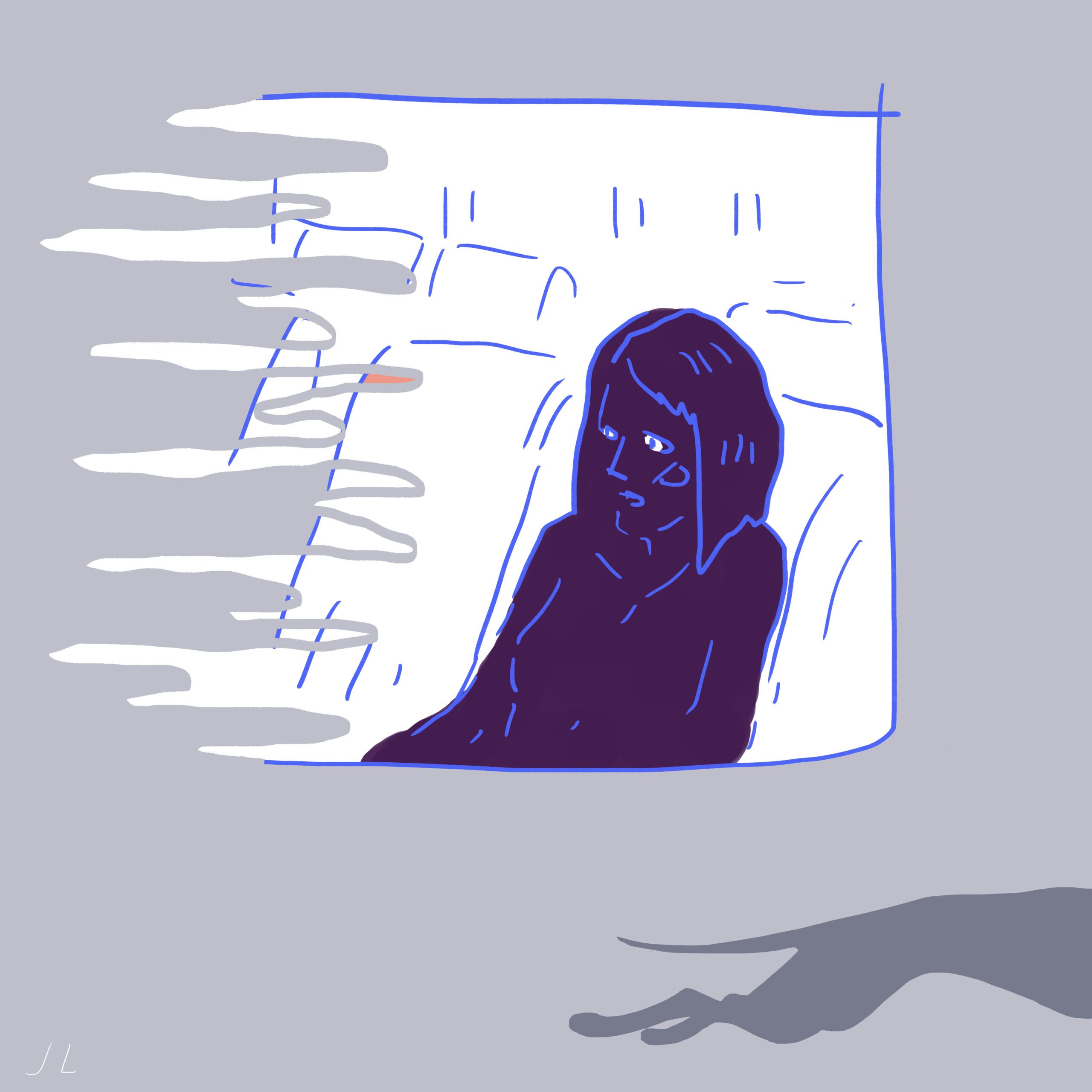 The principal is telling me Jess is ok—she’s breathing fine. An ambulance is coming to take her to the hospital. He wants to know if I want to meet them there or if I….
The principal is telling me Jess is ok—she’s breathing fine. An ambulance is coming to take her to the hospital. He wants to know if I want to meet them there or if I….
“I’m out of town,” I say. The words squeak out of my mouth. “Do you have her dad’s number?”
He does. We hang up. Do I get off the bus? Do I hitchhike back to Brooklyn? Where am I now? Delaware? Virginia? My hands shake; my armpits sweat. I stay in my seat and wait for Ben to call me.
The next three hours are a tumble of assurances and worries. Ben calls me from the back of the ambulance to say that he is with our daughter and she’s fine. Looks tired, asthma’s acting up, but fine. He doesn’t think they will have to spend the night in the hospital and he doesn’t think I should rush back home. I wonder what he is not telling me. He sends me a picture. Her short blond hair is unkempt as always and her lips are pressed in a half-smile. She looks pale.
In the emergency room, doctors monitor Jess’s oxygen level. The breathing treatments begin, so does a bag of IV fluids. They start the paperwork to have her admitted. Ben and I know this drill. But it’s really hard to share information since there is basically no cellular phone service in the emergency room. Meanwhile, as my bus idles in Friday afternoon traffic, I call my neighbor and ask her to bring some things to Ben at the hospital, I call the school and talk to Jess’s teacher, I call the bakery where the birthday treat came from and get the ingredients in their pumpkin doughnuts (no nuts so it might be a cross-contamination issue), and I get online and try to figure out the quickest way to get back to New York. My overheated phone feels like a hot plate pressed against the side of my face. When I am not using it, I clench in my left hand and stare down at it. The bus squeezes through DC’s tight city blocks; the sun sinks toward the horizon. When the driver finally pulls into the terminal I feel like I should be greeted with a stretcher, but instead I walk out to the curb and see my friend’s sister waving to me from the driver’s seat of a shiny, black BMW roadster.
Eventually Ben and I decide that I will stay with my friends and catch another bus in the morning. If I leave now, I’ll be back in New York in the middle of the night, which won’t help anyone. Ben and Jess have settled into a hospital room. She is already asleep and our neighbor has delivered Ben’s laptop, phone charger, medication, and some food, and soon he will be asleep too.
The seven or eight other times my daughter was hospitalized, I was the one who spent the nights in the armchair next to her. I press the power button on my phone until the screen goes black. My friends have dinner waiting for me and there are a number of open bottles on the counter. One friend rubs my shoulders. Another is doing the Running Man in the living room while wearing a sweater that could easily win anyone’s Tacky Christmas party. I have a large glass of bourbon and take a Xanax, and the night ambles by in a dark, gentle blur.
In the morning I take a bus back to Port Authority in Manhattan and then two subways to get to the hospital in Brooklyn. I find them in the playroom at the end of the children’s wing. Jess’s left arm has been splinted, wrapped in gauze, and covered in tape; the clamped end of her IV tube hangs down from the thick padding like the string of a rattle drum. She wears a light green hospital gown printed with clowns. (Every year, the same damn clowns.) Ben turns a magazine over in his lap and runs his hand over his unwashed hair and stubbled chin. “Sweetie, look who’s here,” he says. Jess smiles. “Mommy! Come look at this.” She shows me the big flower blooms someone taught her to make by layering tissue paper. She has dark circles under her eyes. “This flower is green with white on top and then red and then pink and this one is purple and yellow but it’s not done yet.” She studies my face. “Why are you crying?”
*
I wish I could say this episode proved to me that I could indeed take a step back from my family and the center would still hold. An accident occurred, and we will never know if it was caused by asthma or food allergy or some combination of the two. My husband and the other adults in Jess’s life took all the right steps, for here she was, safe and happy and on the mend. In a couple of days she was back at school,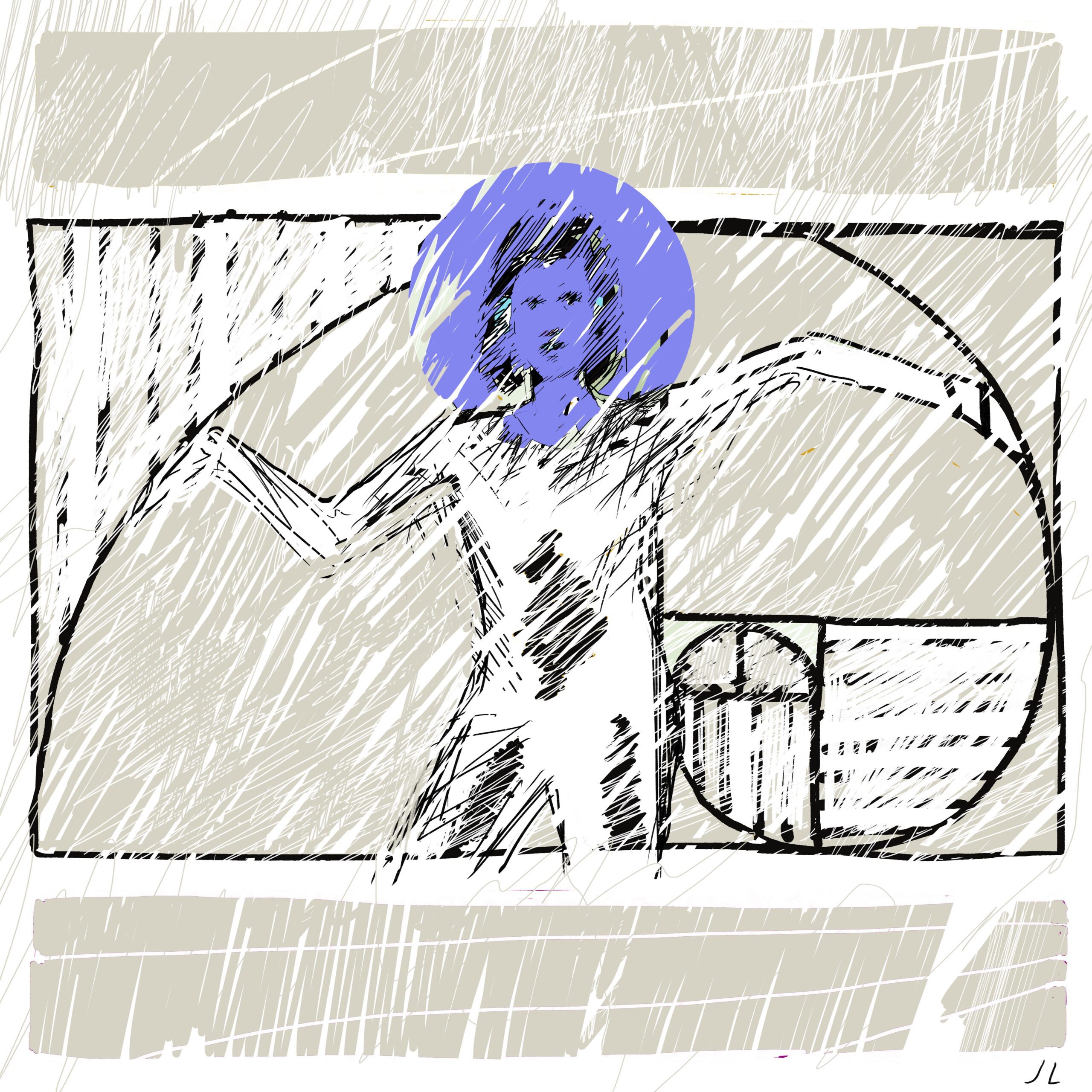 but my momentum evaporated. It seemed impossible to me to commit to any role besides mother.
but my momentum evaporated. It seemed impossible to me to commit to any role besides mother.
For the rest of the school year, I dropped my child off at 8:30 a.m. and picked her up at 2:45 p.m. I packed her a cupcake from home for classroom birthday parties, and I gave the teachers a box of safe treats for backup. If Jess had even the slightest cold, I kept her home so I could monitor her.
I also began the steps to see if she was eligible for special education services. I thought this would be a fairly straightforward process, but you can just toss that onto the towering heap of Things I Was Wrong About. New York City’s Department of Education has sixty days to complete all the evaluations needed to determine a student’s eligibility; in my daughter’s case it took six months. In June, about two weeks before the end of kindergarten, she was approved for an Individualized Education Program. Her program mandates that she receive one-on-one tutoring sessions with a special education teacher in addition to other support like physical and occupational therapy. It took the better part of the school year to obtain this document, and that is with an educated, computer-literate, English-speaking, stay-at-home mother leading the charge.
*
Our savings dwindles every year that I do not earn a paycheck. Our family’s mode of operation is completely unsustainable. I should be filled with gratitude that I have a husband with a full-time job with health benefits. I should thank my lucky stars that I have been able to care for Jess for this long because I don’t even have to leave my block to encounter families with more kids, with more serious problems, with no option whatsoever to stay at home and manage their needs.
But gratitude is just of one of many states of mind that flow through me, along with fear and resentment and frustration and what’s that, oh yeah, more fear.
The more families I meet, the more it is clear to me that everybody’s got something. One child has night terrors; one child’s esophagus does not connect to her stomach. One child bites; one child takes an anti-depressant; one child has Down syndrome. One child lived only two days. I am reminded of something Sarah Manguso wrote in her memoir The Two Kinds of Decay: “suffering, however much and whatever type, shrinks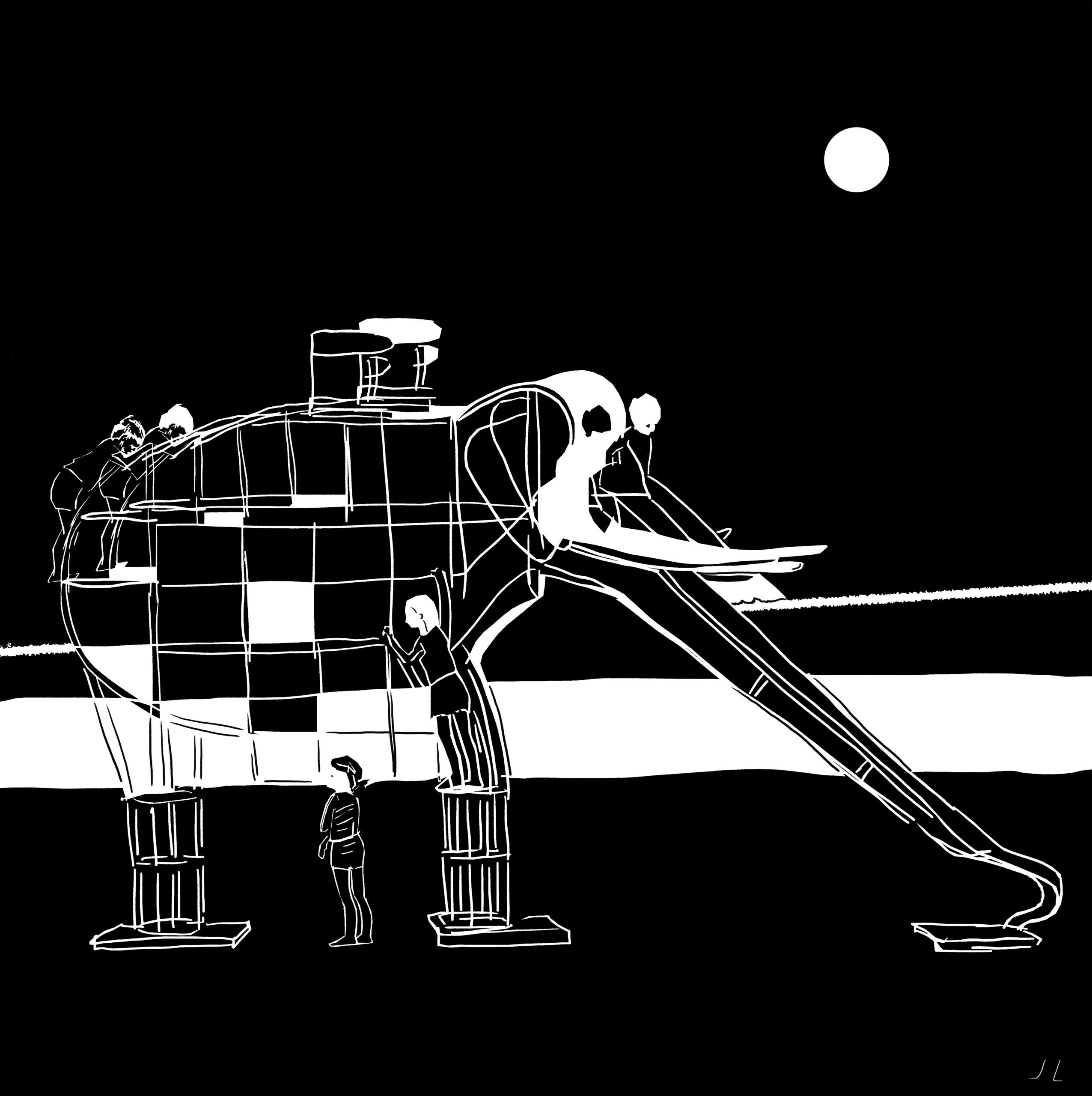 or swells to fit the size and shape of a life.” My daughter gets better, but I can’t seem to make my life any bigger. I guess I’m just embarrassed that I don’t know how to make more room.
or swells to fit the size and shape of a life.” My daughter gets better, but I can’t seem to make my life any bigger. I guess I’m just embarrassed that I don’t know how to make more room.
Now Jess is in first grade. Another round of parent-teacher conferences has come and gone. She has not been back to the hospital since last year. Our understanding of her food allergies and her asthma continues to improve; getting her to drink water and use the bathroom throughout the day to safeguard the health of her kidneys is an ongoing effort. It took a lot of persistence this fall, but she is finally receiving all of the support mandated by her Individual Education Program. The one-on-one tutoring sessions are making a big difference, and the physical therapy and occupational therapy target her strength and stamina. Her distinguishing trait is still her joyful demeanor.
I took a freelance job for a couple of months, but the pay for the projects I completed came out to less than the hourly minimum wage at McDonald’s, so I quit.
My daughter moves only forward, and I have to fight like hell to do the same.
***
Rumpus original art by Justin Limoges.
